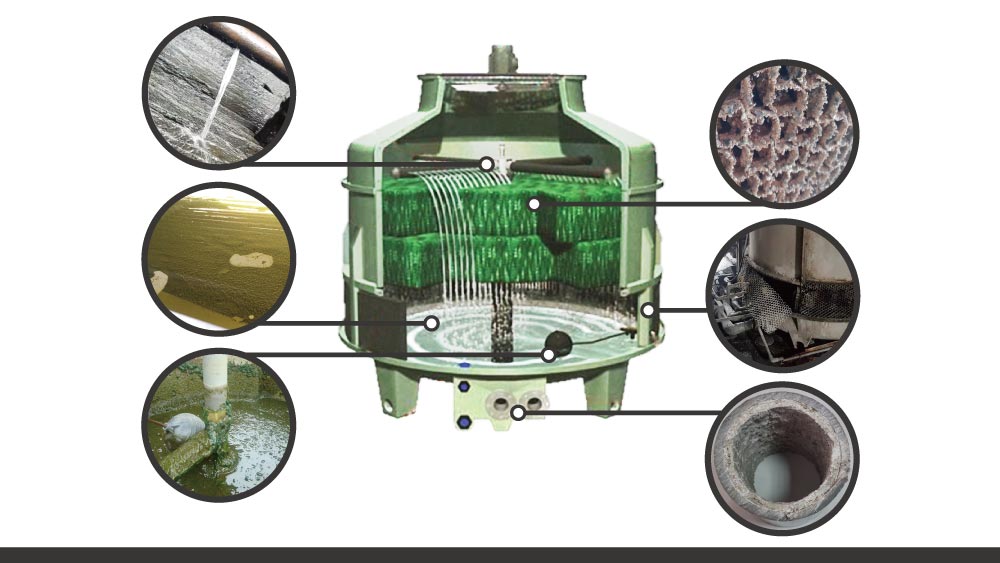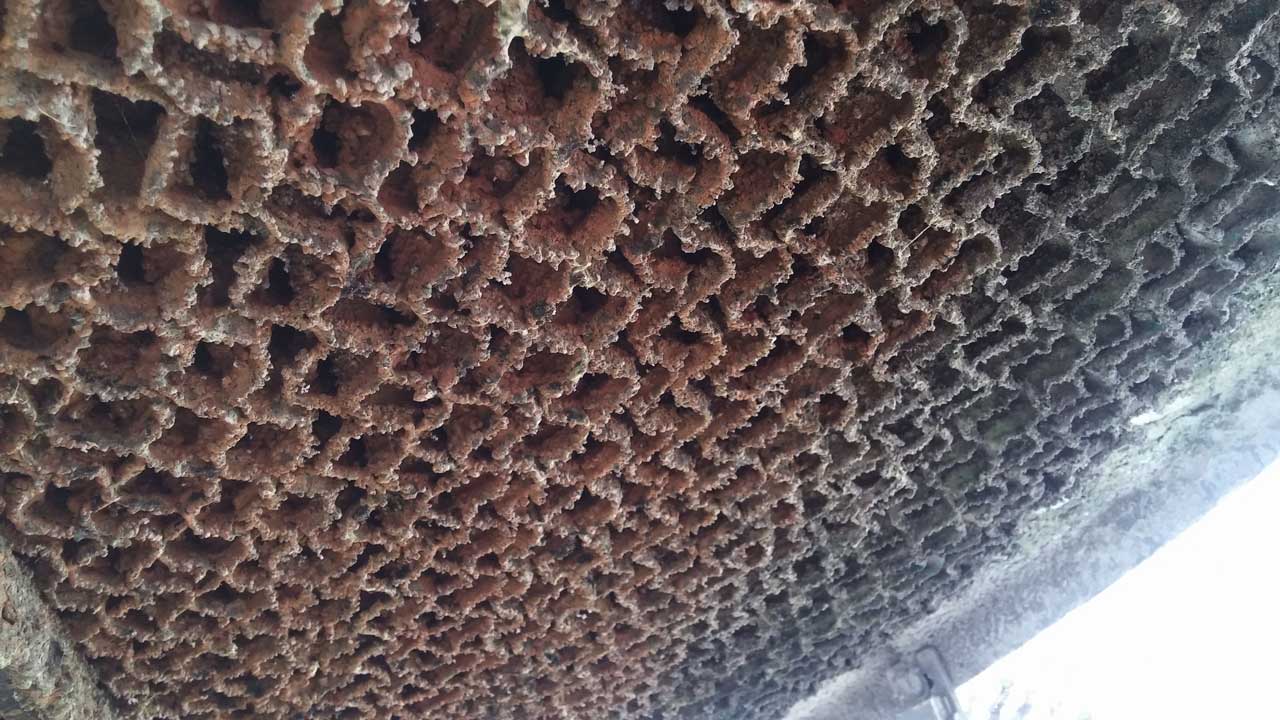To understand why scale deposits are generated in cooling towers, we must first understand the working principle of a cooling tower. Cooling tower is a cooling solution for general industrial equipment. Cooling water, which is transmitted by a circulating pump, is heated by a machine, and thus become hot water which is then returned to the cooling tower. Hot water is then sprayed out of the water distribution tube in the cooling tower, and dispersed by the cooling fills into a large amount of droplets, which then gradually slip between the gaps of the cooling fins. At this time, the cooling fan in the cooling tower will draw air from outside for cooling. Lastly, hot water is converted into cold water and drop into the water basin, and is then transmitted back to the machine by the circulating pump.
Why are scale deposits generated in cooling towers?
In ordinary water bodies there exist various kinds of mineral ions which dissolves in water. When a cooling tower is in operation, it has to dissipate heat, thereby leading to evaporation of large amounts of water and resulting in splashing. In order to ensure that the cooling tower continues to operate and dissipate heat, it is necessary to replenish water in the cooling tower. The concentration of mineral ions will continue to increase until saturation is reached, thereby causing these ions to agglomerate and crystallise, and eventually forming scale deposits. Over a period of time, these scale deposits will clog the entire cooling system.
Cooling tower in operation → Assist machine in heat dissipation → Evaporate large amounts of cooling water → Replenish water in cooling tower → Concentration of minerals in water increases → Enter the machine to dissipate heat → Generate scale deposits → Continue to circulate
What are the effects of scale deposits?
With the increase in scale deposits, the cooling water pipe lines in the machine become narrower, thereby reducing heat exchange efficiency and even resulting in clogging. In the end, heat exchange efficiency will deteriorate, or the machine may stop running due to poor heat dissipation.
How to Solve Scale and Dirt Problems
To solve scale problems, improving water quality is one method considered by many customers. However, do you know that for a 30-ton cooling tower, at least 2 tons of water have to be dispersed per day? This indirectly results in more losses from water treatment consumables. At the same time, dust, leaves and moss from outside, as well as broken cooling fills may also continuously enter the cooling system via the cooling tower.

To completely prevent external contamination from entering the water circulation equipment, JH recommends the closed circuit cooling tower which incorporates the design which separates internal and external water (Principles of Closed Circuit Cooling Tower). With this design, external impurities do not contaminate clean internal water, and do not clog the internal water system. However, external water circulation needs to be regularly maintained. It is usually difficult to maintain ordinary closed circuit cooling towers. The JH closed circuit cooling towers (SCT series) can overcome this disadvantage, as they have an easy-to-remove outer casing and reusable cooling fills. These cooling towers also do not require consumables, and thus they are eco-friendly, and they can be self-maintained too. (How to maintain the JH Closed Circuit Cooling Tower)

 English (UK)
English (UK)  简体中文(中国)
简体中文(中国)  日本語 (Japan)
日本語 (Japan)  繁體中文(台灣)
繁體中文(台灣) 

